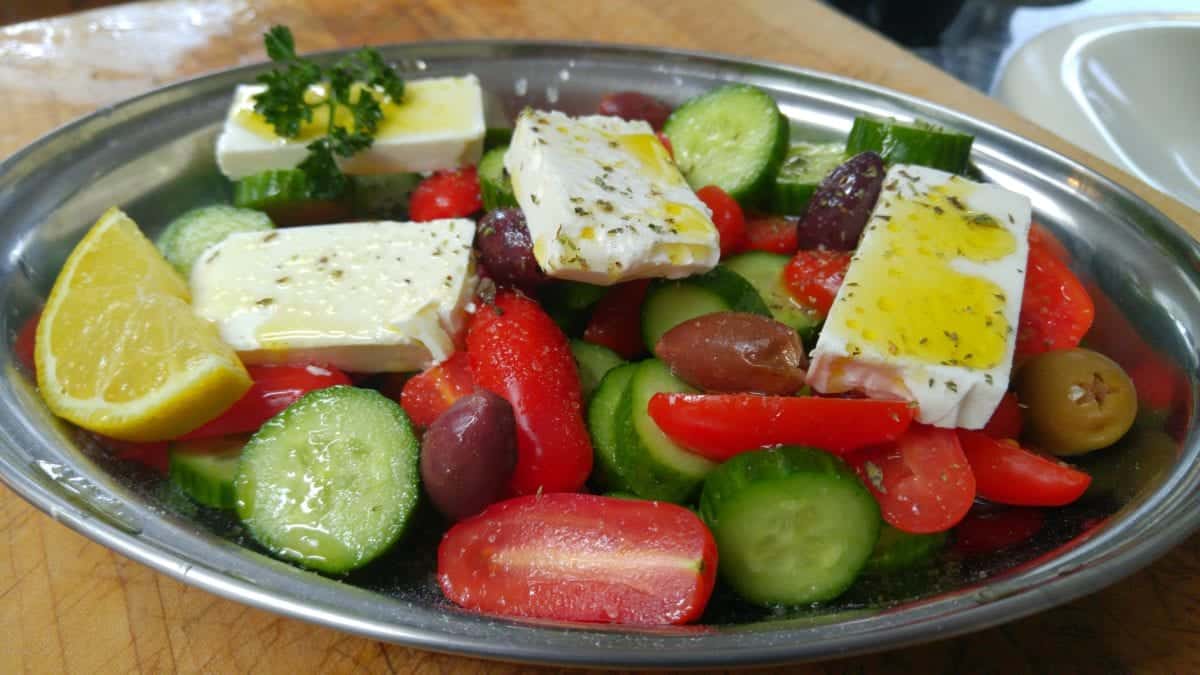

I often get asked ‘how much fat should people on a low carb high fat diet eat’ and ‘which types of fat’? In this article I answer both questions.
As mentioned in previous blogs, there are many types of “low carb diets” -ranging from moderately low carb diets (~130 g carbs) such as the one the American Diabetes Association recommends for weight loss in those with Type 2 Diabetes, to ketogenic low carb diets (5-10% net carbs), and everything in between.
In a ketogenic (keto) low carb diet, carbs (5-10% net carbs) are supplied in foods such as non-starchy vegetables, nuts and seeds, and certain fruit.
In a moderately low carb diet, ~25% of calories come from carbs found in the same foods as with a keto low carb diet, along with the addition of milk and yogurt, legumes, and small amounts of grain products.
What low carb diets have in common is that they provide adequate but not excess protein (~90-100 gms total protein), varying amounts of carbs (35-40 gm in a ketogenic diet, 130 gm in a moderately low carb diet), with the remaining calories coming from healthy fats.
What kinds of fat?
Some types of low carb diets (e.g. Paleo diets, Dr. Atkins diet, etc.) include large amounts of red meat, including processed meat such as bacon and sausage, and an abundance of cream and butter. While there is nothing inherently ‘bad’ about saturated fat for healthy people (covered in a previous article), there are some individuals with specific risk factors or disease conditions that might benefit by taking a more conservative approach with regards to the total amount they eat of these types of fats.
Unless required for clinical reasons, the low carb diets I teach include the saturated fat found naturally in the protein foods for the day, as well as butter for cooking or seasoning vegetables, mayo for canned fish or eggs, and a dollop of sour cream with a meal or cream in coffee. If, for example people love the crispy skin on a barbecued chicken and there is no compelling reason to remove it, then they can by all means enjoy it. Same for the visible fat around the outside of a rib steak.
That said, I see no justifiable reason for adding “fat bombs” to the diet or drinking “bullet proof coffee” made with added butter and coconut oil – especially for individuals who have been overweight or obese and have leptin resistance (covered in an earlier article), that accompanies insulin resistance.
Most of the fats that I recommend people eating should be a natural part of meals and come from mono-unsaturated fruits, such as avocado and olives, from a wide variety of nuts and seeds (as well as from the oils from these foods), from coconut oil used for cooking, as well as from omega 3 fats found abundantly in certain kinds of fish, such as salmon, mackerel and tuna.
It is important to keep in mind as covered in earlier articles, that if one is limiting carbohydrates such as in a ketogenic low carb diet then sufficient fat is required from which the body will make ketones for fuel, as well as for one of the sources (along with protein) from which it can synthesize the small amount of glucose (130 g / day) that it needs for brain function. Of course, when a person is completely fasting (religious reasons, medically supervised, etc.) the 130 g / day of glucose needed by the brain can be made from fat stores.
Remember too, that when limiting carbohydrates, eating adequate amounts of healthy fat will keep you from getting hungry between meals by increasing satiety (the feeling of ‘fullness’ that fat provides), so when you are planning your meals, be sure to include a variety of types of fat in sufficient quantity.

So feel free to add olives on top of a Greek salad and drizzle it liberally with a beautiful extra virgin olive oil.
Enjoy homemade guacamole with blackened fish or a salad liberally sprinkled with nuts or seeds and topped with a macadamia nut balsamic vinaigrette. These are just some of the delicious ways to ensure you are eating sufficient fat.
Want to know which kind of low carb high fat diet might be best for you?
Please send me a note using the “Contact Me” form on this web site.
To our good health!
Joy
Note: There is no one-size-fits-all approach to following a Low Carb High Fat lifestyle since everybody's nutritional needs and health status is different. If you want to adopt this kind of lifestyle, please discuss it with your doctor.
Copyright ©2018 – The Low Carb High Fat Dietitian (a division of BetterByDesign Nutrition Ltd.)
LEGAL NOTICE: The contents of this blog, including text, images and cited statistics as well as all other material contained here (the “content”) are for information purposes only. The content is not intended to be a substitute for professional advice, medical diagnosis and/or treatment and is not suitable for self-administration without the knowledge of your physician and regular monitoring by your physician. Do not disregard medical advice and always consult your physician with any questions you may have regarding a medical condition or before implementing anything you have read or heard in our content.
OnKeto.com is a news aggregation service that brings you best of world articles to you for your consumption.
Author: None
Author URL: None
Original Article Location: http://www.lchf-rd.com/2018/01/03/how-much-and-which-types-of-fat/
